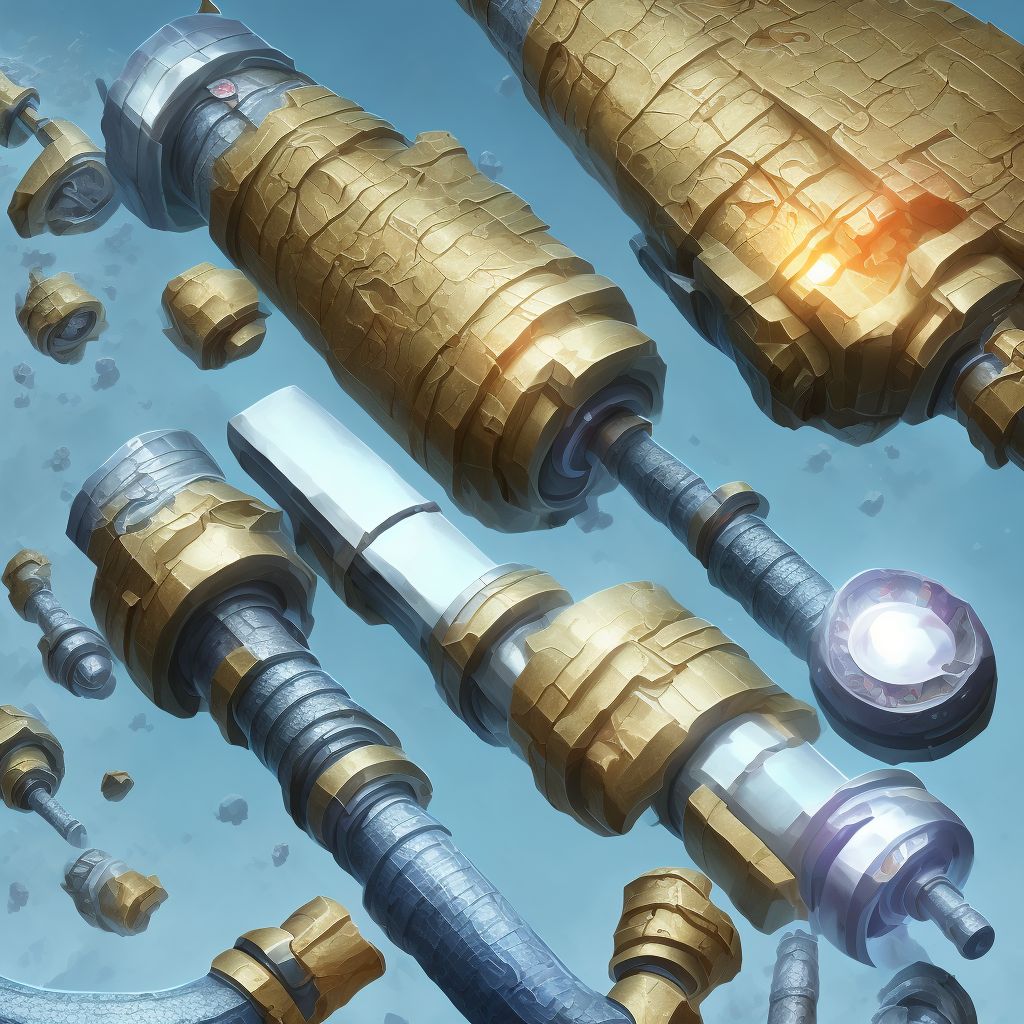
Nondisplaced oblique fracture of shaft of left fibula, subsequent encounter for open fracture type I or II with nonunion Save
ICD-10 code: S82.435M
Disease category: S82.435: Nondisplaced oblique fracture of shaft of left fibula
Nondisplaced Oblique Fracture of the Left Fibula: Understanding Nonunion
A nondisplaced oblique fracture of the shaft of the left fibula occurs when the bone breaks at an angle but does not shift out of place. While this type of fracture may seem less severe than a displaced fracture, it can still lead to complications, such as nonunion.
Nonunion refers to the failure of a fracture to heal properly. In the case of a nondisplaced oblique fracture of the left fibula, nonunion can occur when the fractured bone does not fuse back together as expected. This subsequent encounter for open fracture type I or II with nonunion necessitates further medical attention to promote healing.
Nonunion can be caused by several factors, including poor blood supply to the fracture site, infection, inadequate immobilization, or excessive movement of the fracture fragments. It is essential to address these issues to prevent complications and promote proper healing.
- Blood supply: Adequate blood flow is crucial for bone healing. If the blood supply to the fracture site is compromised, healing may be delayed or prevented. Medical interventions, such as bone grafting or the use of growth factors, may be necessary to enhance blood flow and promote healing.
- Infection: Infections can hinder the healing process and increase the risk of nonunion. Proper wound care, antibiotic treatment, and drainage of any abscesses are essential to prevent and treat infections associated with open fractures.
- Immobilization: Immobilizing the fractured bone is crucial for successful healing. The use of casts, braces, or external fixation devices helps stabilize the bone, allowing the healing process to occur undisturbed.
- Fracture alignment: If the fractured bone is not properly aligned, nonunion may occur. In some cases, surgical intervention may be required to realign the bone fragments and promote healing.
While the treatment methods for nondisplaced oblique fractures with nonunion may vary, it is essential to consult with a medical professional to determine the most appropriate course of action. Early intervention and proper management can increase the chances of successful healing and reduce the risk of long-term complications.
Although nonunion is a potential complication of a nondisplaced oblique fracture of the shaft of the left fibula, with appropriate treatment and care, the majority of patients can achieve optimal recovery and regain their functionality.
Treatment of Nondisplaced oblique fracture of shaft of left fibula, subsequent encounter for open fracture type I or II with nonunion:
Treatment Options for Nondisplaced Oblique Fracture of Shaft of Left Fibula, Subsequent Encounter for Open Fracture Type I or II with Nonunion
A nondisplaced oblique fracture of the shaft of the left fibula, subsequent encounter for open fracture type I or II with nonunion, can be a challenging condition to treat. However, with the advancements in medical technology and surgical te...
To see full information about treatment please Sign up or Log in